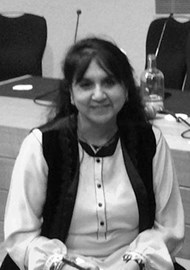This retrospective observational study, conducted at a single site, aimed to compare characteristics of the macular structure and foveal pit in unilateral full-thickness macular hole (FTMH) and healthy fellow eyes. Full-thickness macular holes were further classified into three categories: (1) classical FTMH without epiretinal proliferation; (2) those with epiretinal proliferation; and (3) those without vitreomacular separation. Macular parameters including foveal base width (FBW), central foveolar thickness (CFT), central subfield thickness (CST), central subfield volume (CSV), and retinal artery trajectory (RAT) were measured via optical coherence tomography and fundus photography. Comparisons of these parameters were made among lesioned eyes, contralateral healthy eyes and normal controls. The study recruited 68 patients in each of the unilateral FTMH study groups and the age-and sex-matched control group. Both groups comprised 29 males and 39 females. The average age was 60.7 ±8.7 years in the study group and 62.0 ±13.5 years in the control group (p=0.83). The average axial length was 23.75 ±1.25mm in the unilateral FTMH group and 23.73 ±0.94mm in control group (p=0.82). The healthy fellow eyes of unilateral FTMH showed significantly larger FBWs (446.8±98.2µm) than normal controls (338.4±80.6µm, p<0.001). Both the lesioned and fellow eyes of unilateral FMTH had smaller values of ‘a’ of retinal artery trajectory (0.19±0.06 and 0.14±0.04) than normal controls (0.37±0.14, p<0.001), indicating wider RAT in both groups. No significant macular structure parameter differences were observed among different FTMH subgroups. Females exhibited larger FBW, thinner CFT and CST, and wider RAT than the age-matched males (p<0.05 for all). The area under the receiver operating characteristic curve for predicting FTMH in fellow eyes using FBW and RAT of healthy eyes was 0.874 and 0.903, respectively. The study concluded that patients with unilateral FTMH had a wider RAT in both the affected and healthy eye than the control group, and a wider FBW in their healthy fellow eyes than in controls. A wider FBW and a wider RAT in healthy eyes were predictive of the presence of FTMH in the contralateral eyes. This suggests that strong tangential traction may contribute to FTMH development by dragging the foveal pit and thinning the central foveola. Females had wider FBW, wider RAT, thinner CST, CFT, and CSV than males which can explain the higher prevalence of macular holes in females. Limitations included this study was designed as a cross-sectional and retrospective data collection study. The short follow-up time does not take into account the future possibility of the development of FTMH in the second eye of those with unilateral macular hole.
Macular characteristics in unilateral idiopathic FTMH and fellow eyes
Reviewed by Sofia Rokerya
Macular structure characteristics in unilateral idiopathic full-thickness macular hole and the healthy fellow eyes.
CONTRIBUTOR
Sofia Rokerya
MBBS MRCOphth FRCSI, King's College University Hospital, UK.
View Full Profile



